The New York Rangers are all set to improve upon their stunning run to the Eastern Conference Final in 2022-23, armed with the experience and knowledge from this year’s six-game loss to the two-time defending champion Tampa Bay Lightning that they’ll need to get them over the hump.
Right? Well … more than likely, no. At least, not if you use history as a guide.
Plenty of compelling evidence suggests the Blueshirts might be able to cross the next hurdle next season and reach the Stanley Cup Final – perhaps even making a long-awaited return to championship glory. There are, however, also a myriad of reasons why the Rangers might not even make it as far as they did this season.
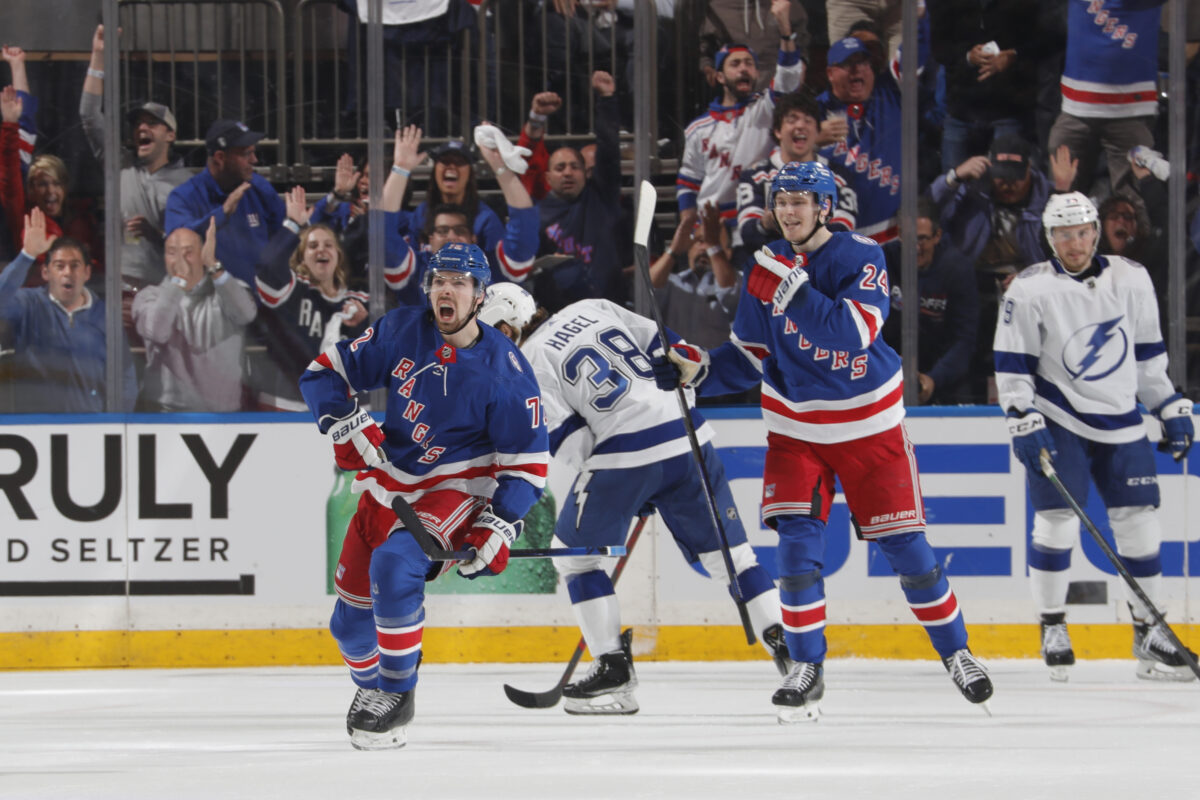
Much of the core talent that powered the Blueshirts on their unexpected run will return, and it’s reasonable to expect at least some of their youthful pieces to continue on an upward trajectory while their veteran stars keep producing at a high level. Yet the opposite could also prove to be true – and the law of averages, along with a look back at the past 16 years, suggest the latter outcome might be the more probable one.
As impressive as the Rangers’ four-year rebuilding project has been, they face plenty of obstacles to getting six more victories than they had last season. Here’s a look at what could go wrong on their road toward what they hope will result in a title in 2022-23.
1. Igor Shesterkin Proves to Be Mortal
Unlike last summer, no one’s questioning the front office’s decision to give young goaltender Igor Shesterkin the biggest second contract in NHL history in terms of average annual value anymore. The 26-year-old signed a four-year deal worth $5.6 million per and more than rewarded his team’s faith in his potential, running away with the Vezina Trophy after going 36-13-4 and leading the league in save percentage (.935), goals-against average (2.07), goals-against percentage (70), goals saved above average (44.9) and adjusted goals-against average (2.11). Shesterkin’s GAA was the third-highest in league history among goaltenders with more than 50 starts, and he was in the conversation for the Hart Trophy as league MVP.
The problem with all of that? Shesterkin playing like an all-time great in 2021-22 frequently bailed out the Rangers when they were being outplayed at 5-on-5 and/or suffering from stretches of defensive deficiency. There’s little question that no one was more responsible for the Blueshirts’ 52-24-6 record, with the sudden star goalie covering up holes in the club’s structure that persisted into the playoffs.
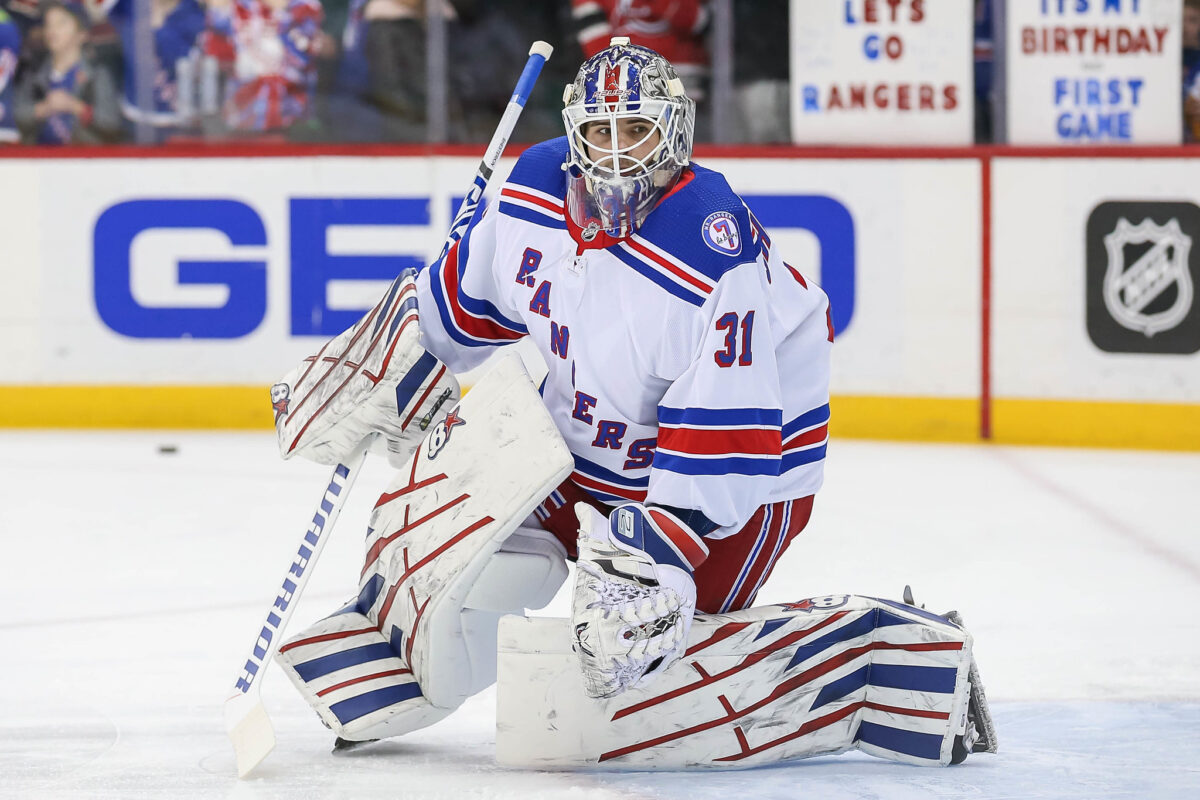
What happens if Shesterkin isn’t nearly as unbeatable next season? Is it reasonable to believe that he’ll play at this level his entire career, or did 2021-22 represent the best he’ll ever be? There’s probably no reason to worry about him being a fluke – Shesterkin was dominant in the Kontinental Hockey League and during a brief stint in the American Hockey League before a pair of excellent efforts in his first two NHL seasons – but it’s a lot to ask for him to deliver similarly elite results season after season, even if he appears to have established himself as one of the best goalies in the world.
If Shesterkin is merely very good in 2022-23 and not great like he was last season, the Rangers might get exposed as a team that relied much too heavily on its goalie to make its first run to the East Final in seven years.
2. Chris Kreider Had a Career Season
As amazing as Shesterkin’s rise was last season, no performance on the Rangers was more surprising than that of Chris Kreider, who scored 52 goals after never having reached 30 in his previous eight full NHL seasons. Kreider, who admitted during his magical 2021-22 that he had finally learned to get out of his own way mentally and allow his prodigious talent to take over, finished third in the league in total goals while leading it with 26 power-play goals and 11 game-winners. His refined, versatile and mature game saw him pair his speed and brawn in the corners with an unmatched net-front presence, resulting in the kind of stunning performance that many had predicted for him, yet always seemed unrealistic.
The question now, however, hews closely to the one Shesterkin faces: Is this the “new” Chris Kreider, with the Blueshirts being able to count on similarly spectacular seasons from a player who exceeded his previous best goal total by 24 in 2021-22? Or was the 52-goal effort the outlier for the power forward?
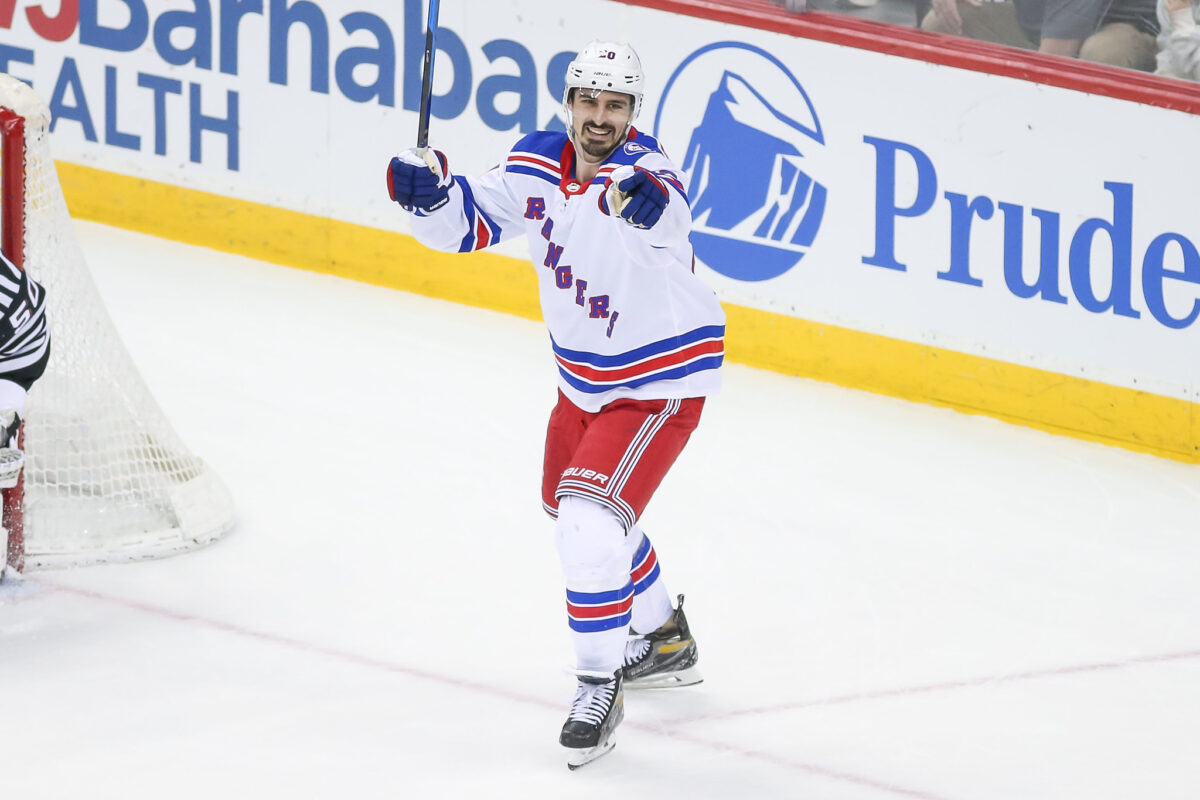
Kreider is only the fifth player in NHL history to reach the 50-goal mark for the first time after turning 30. Even if his newfound mental approach means he’s become a more prolific offensive player than he was earlier in his career, some regression toward the mean seems likely next season, given Kreider’s age and the extent to which he exceeded his well-established track record in 2021-22. If that happens, will the rest of the Rangers be able to replace those lost goals?
3. The Kids’ Development Goes Awry
It’s easy to assume that strong play by the Rangers’ talented young pieces in the last postseason will equate to “ah-hah” moments for them, the experience serving as a jumping-off point to standout NHL careers. Yet despite the impact of the team’s “Kid Line” of Alexis Lafreniere, Kaapo Kakko and Filip Chytil during the run to the conference finals, Rangers management still doesn’t know enough about any of the three precocious forwards to be able to depend heavily on them in 2022-23.
Related: Rangers’ Filip Chytil Must Avoid Alex Kovalev’s Path With Team
Lafreniere and Kakko, their growth process stunted at least somewhat by the pandemic, have shown signs that the light might be close to going on – particularly Lafreniere. Yet they remain mostly unproven commodities. Simply projecting them out to be superstars in the near future, say next season, can be a recipe for disappointment – given the fact that it’s happened countless times before. There just isn’t enough of a track record yet for anyone to be surprised if their development goes sideways – even if temporary – instead of steadily upward.

Chytil, who somehow is only 22 despite being around for what feels like forever, is in the same boat. Was his inspired, eye-opening playoff performance a long-awaited breakout, or did he just get hot at the right time? The club would be substantially rewarded if he’s finally ready to take over second-line center duties – but it would be very costly if the front office chooses to run with Chytil in that spot and he reverts to the inconsistent form that has marked his career.
The Rangers’ rebuild reaching championship potential probably hinges on at least two of those young talents becoming high-end NHL players, if not stars. It would be nice if all three of them did so next season. It seems more in line with reality that they won’t.
4. The Rangers’ Post-Trade Deadline Depth Takes a Hit
The Blueshirts of 2021-22 benefited tremendously from general manager Chris Drury’s trade-deadline acquisitions, with forwards Frank Vatrano, Andrew Copp and Tyler Motte and defenseman Justin Braun representing perfect complements to the team’s core down the stretch and into the playoffs.
All four had significant roles in the deep postseason run. Yet the Rangers are about to watch at least some, if not all, of those players head elsewhere this offseason, as each is a pending unrestricted free agent. Salary-cap constraints will make re-signing any of them difficult if not impossible; in fact, the Blueshirts might have to focus on retaining only one of those players as they work to construct their 2022-23 roster amidst the tight financial squeeze they’re facing over the next 2-3 seasons.
That means finding cheaper and less proven options to fill the holes left behind. For instance, if Vatrano departs, the Rangers might have to turn to talented but flaky right wing Vitali Kravtsov, who’s done nothing to prove that he can be counted on.
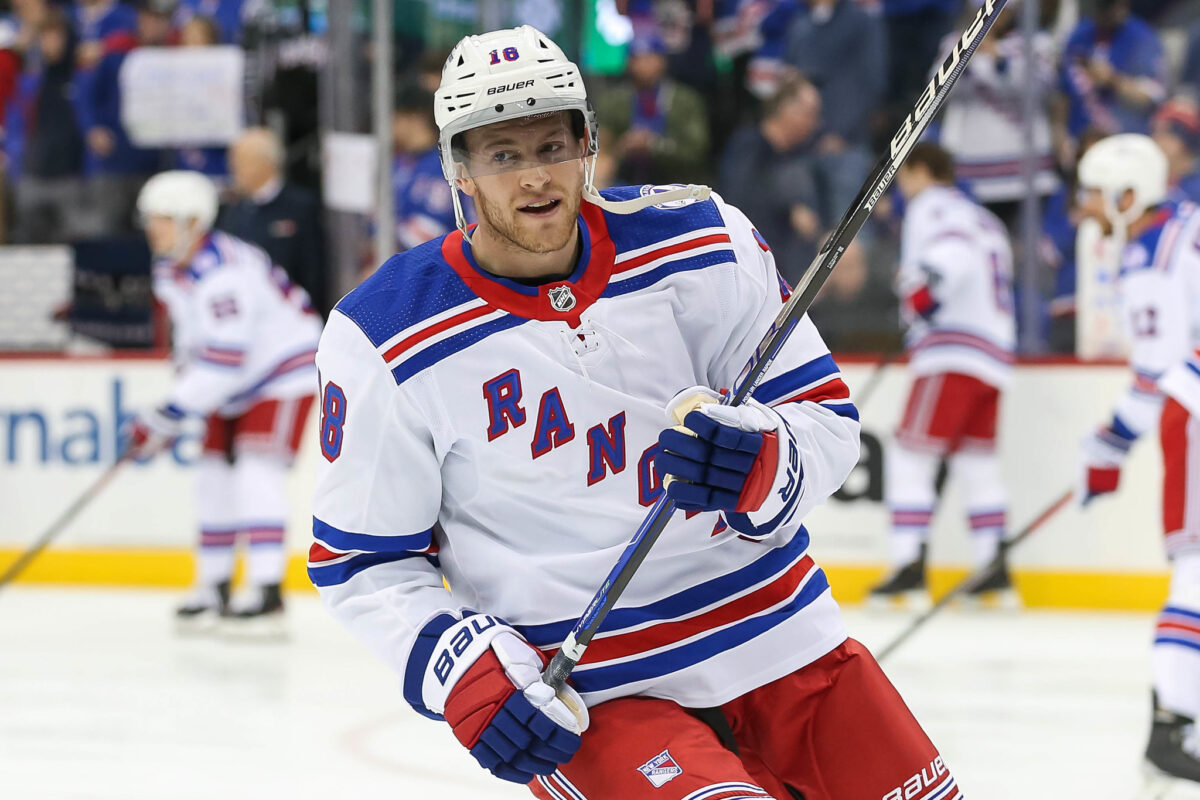
Copp’s versatility as a top-six forward who scores, kills penalties and wins faceoffs would be missed. Motte’s speed, forechecking and penalty killing were invaluable during the playoffs, and Braun helped to stabilize the third defense pair.
In addition, center Ryan Strome is a UFA and could head elsewhere in search of long-term security, which the Rangers might not be willing or able to offer. The club faces a major challenge in maintaining the depth that served it so well in coming within two wins of the Stanley Cup Final.
5. Recent History Isn’t Kind to Repeat Playoff Runs
What’s just as dangerous as assuming young players will continually get better? Taking for granted a team’s successful postseason that falls short as a “first step” toward a Stanley Cup, one that the club is certain to improve upon the following season. Put bluntly, that’s nothing more than a myth.
Only one of the four teams that reached the conference finals in 2022 had gotten that far the previous season, that of course being the Lightning. In 2021, three of the conference finals participants were holdovers from 2020 – but that was an anomaly. It’s the only time in the salary-cap era that began with the 2005-06 season that as many as three clubs did it.
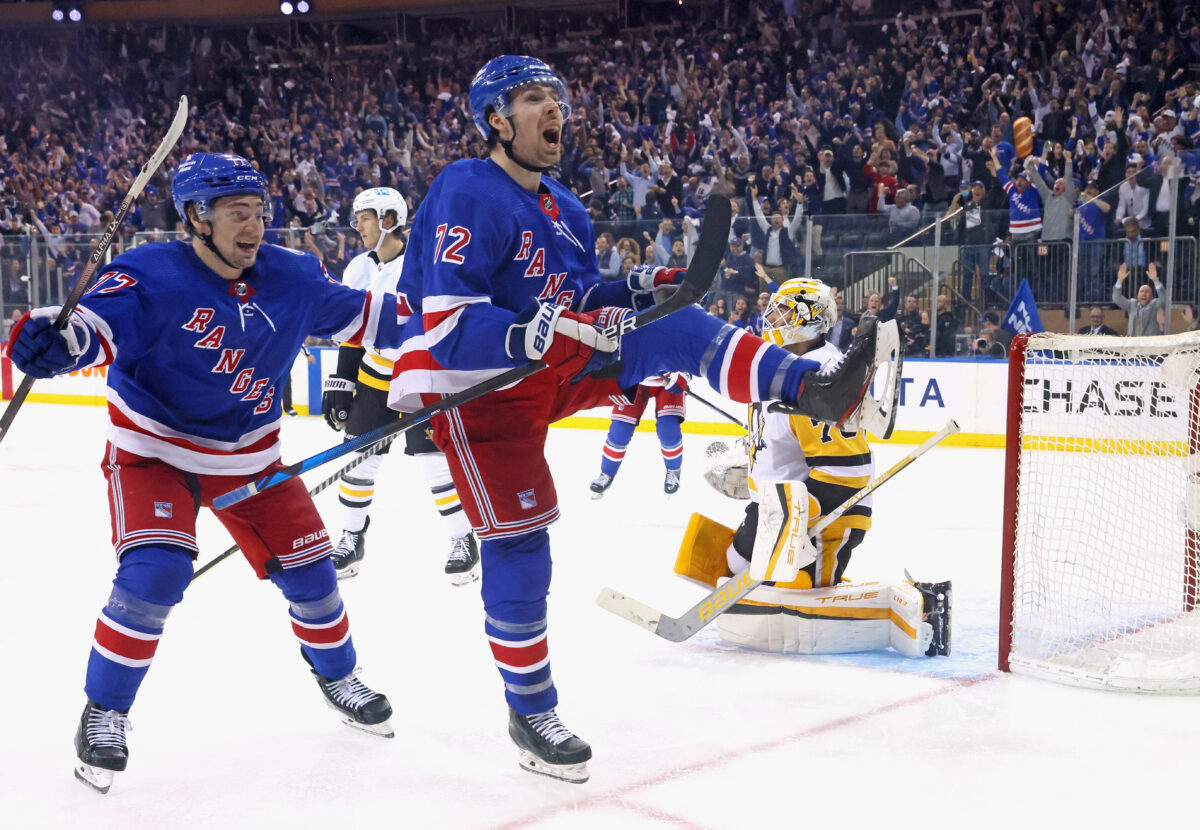
In the three playoffs preceding 2021, none of the teams that advanced to the conference finals the previous season reached that round again the following season. In fact, that has occurred five times in the cap era. In six other years in that span, only one team returned to the conference finals the season after making it there.
In the NHL’s 16 salary-capped seasons, 16 teams in all have followed up a conference finals appearance with another one the next year. Those paltry odds knock down the idea that clubs simply “climb the next rung on the ladder” in the ensuing postseason – and should provide a healthy dose of reality for any Rangers fans penciling their team in for a Stanley Cup Final berth next June.
Examples of this abound, but the Lightning provide a textbook one. Tampa Bay lost in the first round in 2014, reached the Cup Final and lost the next year, lost in the East Final in 2016, missed the playoffs in ’17, advanced to the conference finals again the year after and lost, then were swept in the first round by the Columbus Blue Jackets in 2019 despite compiling 128 points that season.

The Lightning, of course, won it all the next two seasons. The path there for that extremely talented group, though, was anything but linear, filled with excruciating losses and lessons on how to win in the playoffs along the way – and they represent only one case of this among many. Any belief that the Rangers will undoubtedly be right back the East Final next year with whatever personnel and wisdom they need to reach the next round, isn’t supported by past results.
Despair Isn’t the Best Mindset, Either
So should the Rangers’ faithful assume the worst next season? Of course not. The Blueshirts should be considered championship contenders until they prove otherwise, and the past isn’t always prologue, especially in sports.
The Rangers’ thrilling and unexpected run this season, though, is fraught with the danger of creating unrealistic expectations for 2022-23 and beyond: That Shesterkin will again play at a historic level; that Lafreniere and Kakko will fulfill their high draft pick pedigrees; that Kreider is waiting to deliver another 50 goals; that the roster will be just as good if not better. That everything will go right in the playoffs.

Some teams take circuitous routes to winning the Stanley Cup. Some get close again and again and never reach the mountaintop. Others put together a run at the title that proves to be a one-shot deal. A loss in an earlier round for the Rangers next season – or missing the playoffs altogether – shouldn’t necessarily be branded a failure, if it’s viewed through the long-term lens of trying to win a title.
Can the Rangers end next season skating with the chalice above their heads, as the Colorado Avalanche did this season? Of course. Don’t count on it just because of what happened in 2021-22, though.